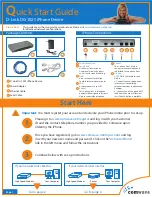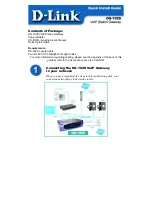
Chapter 7 LAN Setup
P-660HN-TxA User’s Guide
101
probably adequate for most networks, unless you have an unusual network
topology.
Both RIP-2B and RIP-2M sends the routing data in RIP-2 format; the difference
being that RIP-2B uses subnet broadcasting while RIP-2M uses multicasting.
7.6.6 Multicast
Traditionally, IP packets are transmitted in one of either two ways - Unicast (1
sender - 1 recipient) or Broadcast (1 sender - everybody on the network).
Multicast delivers IP packets to a group of hosts on the network - not everybody
and not just 1.
IGMP (Internet Group Multicast Protocol) is a network-layer protocol used to
establish membership in a Multicast group - it is not used to carry user data. IGMP
version 2 (RFC 2236) is an improvement over version 1 (RFC 1112) but IGMP
version 1 is still in wide use. IGMP version 3 supports source filtering, reporting or
ignoring traffic from specific source address to a particular host on the network. If
you would like to read more detailed information about interoperability between
IGMP version 2 and version 1, please see sections 4 and 5 of RFC 2236. The class
D IP address is used to identify host groups and can be in the range 224.0.0.0 to
239.255.255.255. The address 224.0.0.0 is not assigned to any group and is used
by IP multicast computers. The address 224.0.0.1 is used for query messages and
is assigned to the permanent group of all IP hosts (including gateways). All hosts
must join the 224.0.0.1 group in order to participate in IGMP. The address
224.0.0.2 is assigned to the multicast routers group.
The ZyXEL Device supports IGMP version 1 (IGMP-v1), IGMP version 2 (IGMP-
v2) and IGMP version 3 (IGMP-v3). At start up, the ZyXEL Device queries all
directly connected networks to gather group membership. After that, the ZyXEL
Device periodically updates this information. IP multicasting can be enabled/
disabled on the ZyXEL Device LAN and/or WAN interfaces in the web configurator
(LAN; WAN). Select None to disable IP multicasting on these interfaces.
Содержание P-660HN-TxA
Страница 2: ......
Страница 8: ...Safety Warnings P 660HN TxA User s Guide 8...
Страница 10: ...Contents Overview P 660HN TxA User s Guide 10...
Страница 18: ...Table of Contents P 660HN TxA User s Guide 18...
Страница 19: ...19 PART I User s Guide...
Страница 20: ...20...
Страница 28: ...Chapter 1 Introduction P 660HN TxA User s Guide 28...
Страница 57: ...57 PART II Technical Reference...
Страница 58: ...58...
Страница 102: ...Chapter 7 LAN Setup P 660HN TxA User s Guide 102...
Страница 150: ...Chapter 9 Network Address Translation NAT P 660HN TxA User s Guide 150...
Страница 154: ...Chapter 10 Firewall P 660HN TxA User s Guide 154...
Страница 164: ...Chapter 12 Static Route P 660HN TxA User s Guide 164...
Страница 190: ...Chapter 16 Remote Management P 660HN TxA User s Guide 190...
Страница 206: ...Chapter 18 CWMP P 660HN TxA User s Guide 206...
Страница 228: ...Chapter 21 Tools P 660HN TxA User s Guide 228...
Страница 238: ...Chapter 23 Troubleshooting P 660HN TxA User s Guide 238...
Страница 270: ...Appendix A Setting up Your Computer s IP Address P 660HN TxA User s Guide 270...
Страница 280: ...Appendix B IP Addresses and Subnetting P 660HN TxA User s Guide 280...
Страница 290: ...Appendix C Pop up Windows JavaScripts and Java Permissions P 660HN TxA User s Guide 290...
Страница 322: ...Index P 660HN TxA User s Guide 322...
Страница 323: ...Index P 660HN TxA User s Guide 323...
Страница 324: ...Index P 660HN TxA User s Guide 324...
















































